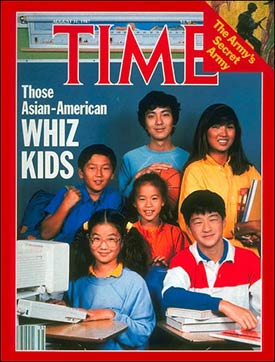
Why We Read and Write: Race and Identity
Nita Noveno, Borough of Manhattan Community College (CUNY)
Encounter
What is the American dream? How is one’s identity formed? What are the causes and effects of stereotypes, the experiences of immigrants, and the past and present challenges of living in the United States? These were some of the questions posed in my English Composition (ENG101) course this semester. By integrating literature on the Asian and Asian American experience in this course, my goal was to broaden students’ concepts of the “American” experience as well as to have them consider the issues of immigrants of color in the US. Similarly, in one series of readings in my Intensive Writing (ENG095) course, my students grappled with themes of race and identity, which included the issue of Asian stereotypes in Hollywood.
I hoped to create more opportunities for critical classroom discussions about race and racism in America, taking into account the experiences of Asian Americans. Students were encouraged to share their own observations and experiences with race and identity in America in their written and oral responses to the readings. ENG101 students were required to write a research essay referring to a series of texts about the immigrant experience. ENG095 students had to write a persuasive essay on the representation of people of color in movies and television.
In my World Literature (ENG392) course, which spans over 400 years of literature from the 17th century to present day, I added contemporary works by two Asian American writers, Jessica Hagedorn and Viet Nguyen, to this semester’s syllabus. These two writers participated in a colloquium at the college. Prior to their visit, the students discussed the themes of immigration, colonialism, and the American Dream in their work and then had the opportunity to engage with them in person at the colloquium.
Immersion
In my ENG095 class, students read, discussed, and wrote short responses to the following articles about whitewashing in Hollywood movies and on TV shows: “Racial diversity in films has flatlined-Hollywood needs to rewrite the script” by Bidisha, “Whitewashing Was One of Hollywood’s Worst Habits. So Why Is It Still Happening?” by Amanda Scherker, and “Asian-American Actors Are Fighting for Visibility. They Will Not Be Ignored” by Amanda Hess.
In my ENG101 class, students read and discussed a chapter excerpt from Vivek Bald’s Bengali Harlem as well as “My Life as an Undocumented Immigrant” by Jose Antonio Vargas. They also viewed two TED Talks by Jose Antonio Vargas (“Actions are illegal, never people”) and Tan Le (“My immigration story”) in addition to other texts dealing with the theme of the immigrant experience and stereotypes.
In my ENG392 class, students read haikus from an excerpt of Narrow Road to the Deep North by the Matsuo Basho. They also read three poems by Jessica Hagedorn (“Art & Leisure”, “Filipino Boogie”, and “The Mummy” on the Poetry Foundation website) and a novel, The Sympathizer, by Viet Nguyen.
Response
The various readings and discussions of the readings were eye-opening and engaging for students and teacher alike. The students revealed their own compelling experiences and insights on race, racism, immigration and the American Dream and included their observations and analysis in their writing assignments in thoughtful, critical ways.
Since it was near the end of the semester, reading a robust novel like The Sympathizer was a challenge for most of my world literature students. If I were to do it differently, I would provide more reading and discussion time in general for this work. Despite this, however, the students found the history of the Vietnam War, the Vietnamese refugee experience, and the portrayal of the war in Hollywood films as portrayed in the book and from Nguyen’s presentation to be sobering and profound, but not without humor and insight.
In sum, the students appreciated the readings and discussions on these themes of race and identity. These themes in all of my classes opened up spaces for students to understand their own lives and to consider more deeply the complexities of today’s world.







